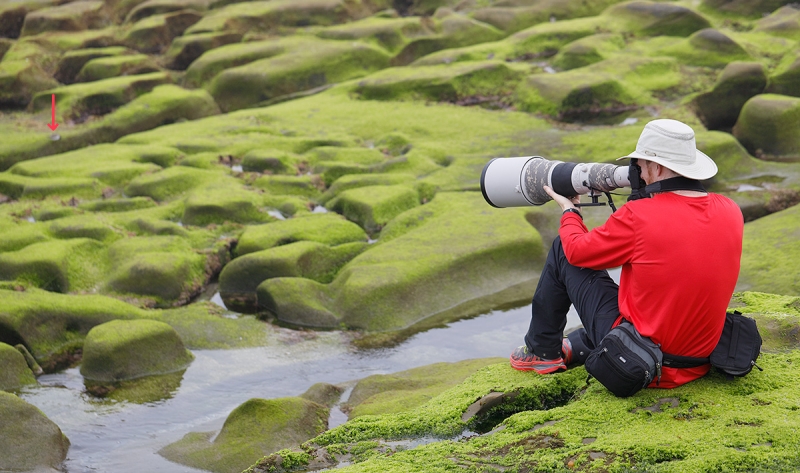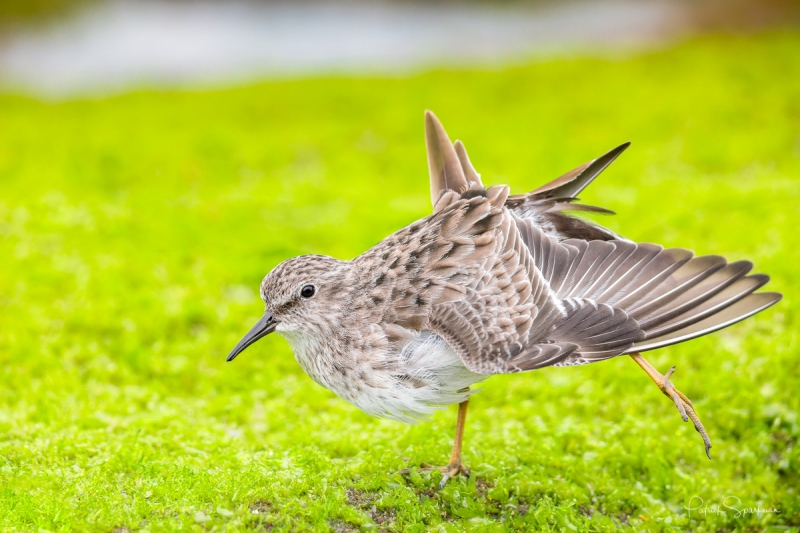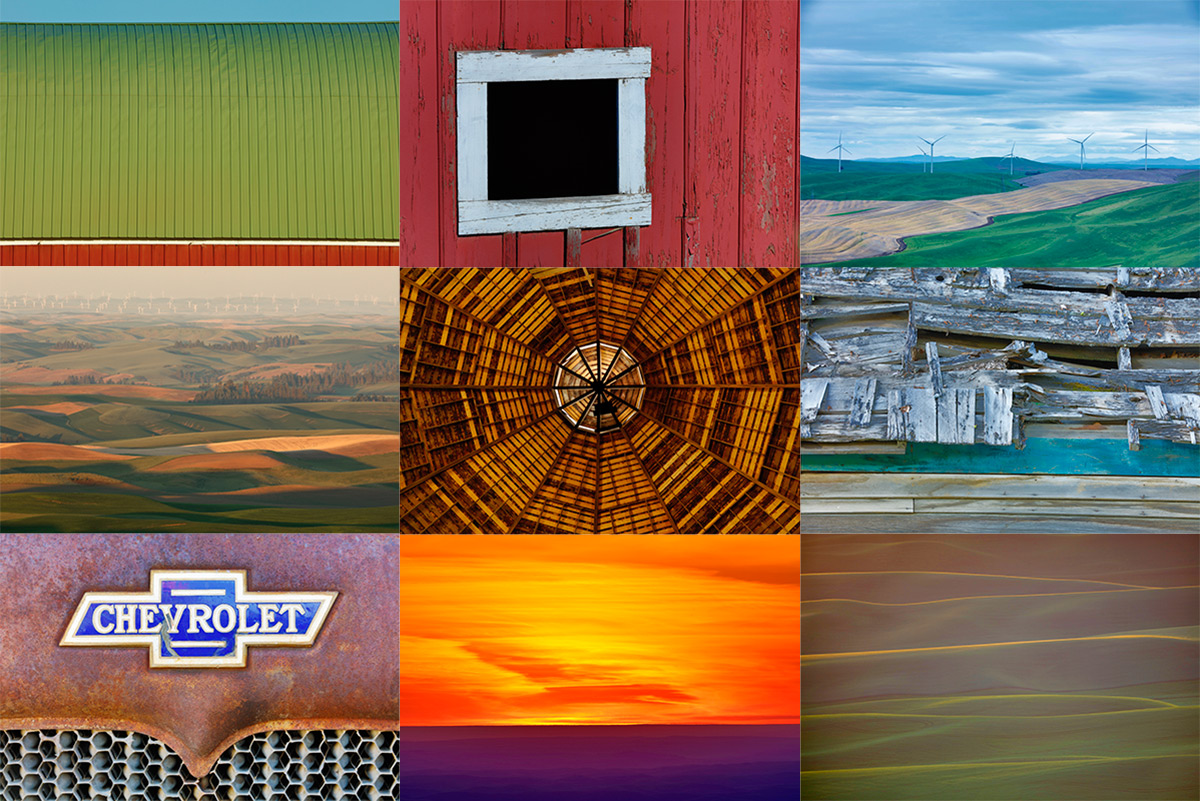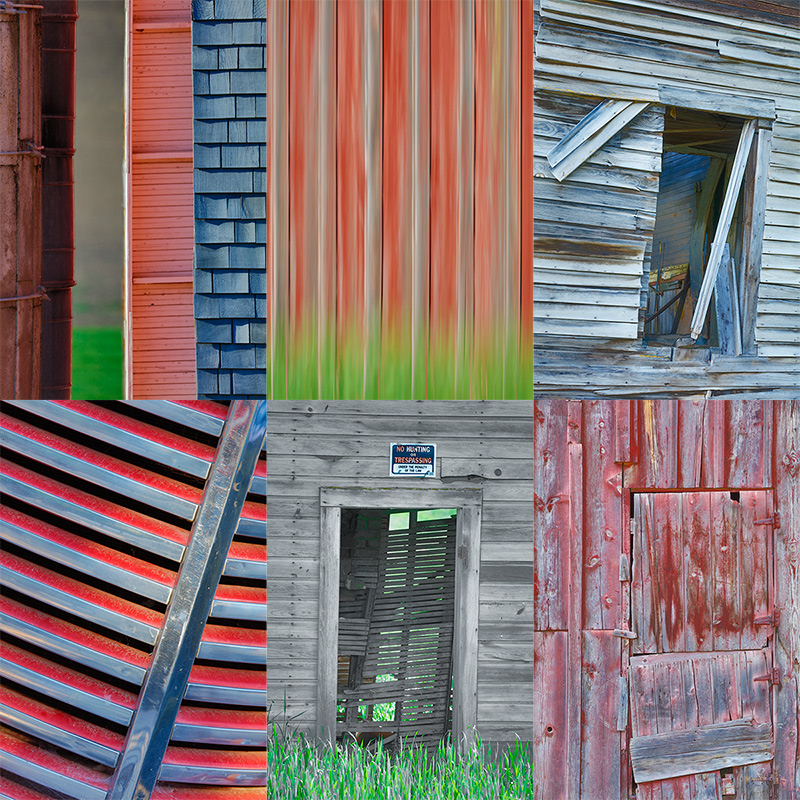What’s Up?
On Friday I worked on this and another blog post and packed up for my drive up to Gatorland. I will be offering the meet-up on most weekends that I am home so stay-tuned for the next one. I am gonna try to sneak in a swim and a walk before I head up to Kissimmee.
Gear Questions and Advice
Too many folks attending BAA IPTs and dozens of folks whom I see in the field, and on BPN, are–out of ignorance–using the wrong gear, especially when it comes to tripods and more especially, tripod heads… Please know that I am always glad to answer your gear questions via e-mail.
The Streak: 8!
Today’s blog post marks a totally insane, irrational, illogical, preposterous, absurd, completely ridiculous, unfathomable, silly, incomprehensible, what’s wrong with this guy?, makes-no-sense, 8 days in a row with a new educational blog post. As always–and folks have been doing a really great for a long time now–please remember to use our B&H links for your major gear purchases. For best results use one of our many product-specific links; after clicking on one of those you can continue shopping with all subsequent purchases invisibly tracked to BAA. Your doing so is always greatly appreciated. Please remember: web orders only. And please remember also that if you are shopping for items that we carry in the BAA Online Store (as noted in red at the close of this post below) we would of course appreciate your business.
Amazing Friends at the Hotel Sparkyman
Thanks again to dear friends Patrick and Robin Sparkman for putting me up at their home in the Scripps Ranch neighborhood of San Diego on my post-School for the Work visit (just as they put me up last year for an extended stay before and after my prostate surgery). Imagine that they make sure that there is reduced sugar ketchup and a big jar of mayo on hand in advance. Imagine that Robin always has a big jug of ice cold Raspberry Zinger Celestial Seasonings Tea in the fridge. And that she not only refuses to let me do my own laundry but that she folds everything! What luxury, and something that I never do. That Patrick is a great cook who specializes in barbecuing steaks and pork and chicken on his big Green Egg is just icing on the cake. Thank you guys for the Hotel Sparkyman.
Thanks also to Patrick for sharing his superb Least Sandpiper wing stretch image with us here (below). He is as good as it gets when it comes to hand holding at 840 and at 1200mm.
|
|
|
I created this image at La Jolla, CA with the hand held Canon EF 100mm f/2.8L Macro IS USM lens and the Canon EOS 5D Mark IV. ISO 400. Evaluative metering +1/3 stop: 1/1250 sec. at f/4 in Manual mode. AWB. Center AF point/AI Servo/Expand/Rear Focus AF on Patrick’s neck and re-compose. Click here to see the latest version of the Rear Focus Tutorial. Click on the image to see a larger version. Image #1: Patrick and Least Sandpiper … |
Patrick and Friend …
After working the difficult to photograph cormorant chicks at La Jolla on March 19th (Jennifer’s birthday!) we headed down to the low cliffs. Patrick grabbed his big lens to search for a few shorebirds — they were surprisingly scarce while I was in San Diego. It was quite calm so I grabbed the 100 macro and did some hand held wildflowers. When I was done, I headed down to The Crevice to see what Patrick was doing — see the photo above.
If I had not pointed out the bird with the red arrow would you have spotted it?
Knee Podding It
Notice Patrick’s perfect knee pod technique: left forearm on left thigh just behind bent left knee.
Image Questions
1-How might stopping down to f/8 or even f/11 have helped this image?
2-Why was it necessary to use rear button (of One-Shot) AF to create Image #1?
|
|
|
This image was created at La Jolla, CA by Patrick Sparkman with the hand held Canon EF 600mm f/4L IS II USM lens, the Canon Extender EF 2X III, and the Canon EOS 5D Mark IV. ISO 1600. Evaluative metering +1/3 stop: 1/400 sec. at f/8 in Manual mode. AWB. LensAlign/FocusTune micro-adjustment: +1. Center AF point/AI Servo/Surround/Shutter Button AF was active at the moment of exposure. Click on the image to enjoy a a larger version. Image #2: Least Sandpiper elegant near-wing stretch.
|
Bingo on Patrick’s Killer Calidris Wingstretch!
Creating a perfect shorebird near-wing stretch image is a big challenge. Most of the time, when everything seems perfect, the bird has its head turned away from you. Thanks to noted avian artist and author Julie Zickefoose who let me know that the upward-pointing feather coming out of the middle of the back is a tertial from the stretch (near-) wing, and that the angled feather to the right of that one, the one at a 45 degree angle, is a primary feather from the far wing.
Calidris: a taxonomic genus within the family Scolopacidae that includes the small sandpipers.
Scolopacidae: a family of birds (suborder Charadrii) including the woodcocks, snipes, sandpipers, tattlers, curlews, and godwits.
Charadrii: shorebirds: plovers; sandpipers; avocets; phalaropes; coursers; stone curlews
A Question on Handling the Greens
Notice the striking difference in the green tones of the seaweed. Patrick likes to really juice up the color in his images. Above, my seaweed is a rendered as a much more subdued color. If you wanted to tone down Patrick’s GREENS using a Hue-Saturation adjustment, which color would you desaturate?
Palouse 2016 Horizontals Card |
Why Different?
Announcing the 2017 BIRDS AS ART Palouse Instructional Photo-Tour
In what ways will the 2017 BIRDS AS ART Palouse Instructional Photo-Tour be different from the most other Palouse workshops?
There are so many great locations that a seven-day IPT (as opposed to the typical three- or five-day workshops) will give the group time to visit (and revisit) many of the best spots while allowing you to maximize your air travel dollars. In addition, it will allow us to enjoy a slightly more relaxed pace.
You will be assured of being in the right location for the given weather and sky conditions.
You will learn and hone both basic and advanced compositional and image design skills.
You will learn to design powerful, graphic images.
You will visit all of the iconic locations and a few spectacular ones that are much less frequently visited.
You will learn long lens landscape techniques.
You will learn to master any exposure situation in one minute or less.
You will learn the fine points of Canon in-camera (5D Mark III, 5DS R, and 7D II) HDR techniques.
You will learn to create this look in Photoshop from a single image while winding up with a higher quality image file.
You will be able to share a variety of my exotic Canon lenses including the Canon EF 11-24mm f/4L USM lens and the Canon EF 8-15mm f/4L Fisheye USM lens, aka the “circle lens.”
You will learn to use your longest focal lengths to create rolling field and Urbex abstracts.
You will learn when and how to use a variety of neutral density filters to create pleasing blurs of the Palouse’s gorgeous rolling farmlands.
As always, you will learn to see like a pro. You will learn what makes one situation prime and another seemingly similar one a waste of your time.
You will learn to see the situation and to create a variety of top-notch images.
You will learn to use super-wide lenses both for big skies and building interiors.
You will learn when, why, and how to use infrared capture; if you do not own an infrared body, you will get to borrow mine.
You will learn to use both backlight and side-light to create powerful and dramatic landscape images.
You will learn to create the very popular detailed, slightly grungy, slightly over-saturated look in Photoshop.
Palouse 2016 Verticals Card |
The 2017 BIRDS AS ART Palouse Instructional Photo-Tour
June 8-14, 2017. Seven full days of photography. Meet and greet at 7:30pm on Wednesday, June 7: $2,499. Limit 10/Openings: 7.
Rolling farmlands provide a magical patchwork of textures and colors, especially when viewed from the top of Steptoe Butte where we will enjoy spectacular sunrises and at least one nice sunset. We will photograph grand landscapes and mini-scenics of the rolling hills and farm fields. I will bring you to more than a few really neat old abandoned barns and farmhouses in idyllic settings. There is no better way to improve your compositional and image design skills and to develop your creativity than to join me for this trip. Photoshop and image sharing sessions when we have the time and energy…. We get up early and stay out late and the days are long.
Over the past three years, with the help of my friend Denise Ippolito, we found all the iconic locations and, in addition, lots of spectacular new old barns and breath-taking landforms and vistas. What’s included: In-the-field instruction, guidance, lessons, and inspiration, my extensive knowledge of the area, all lunches, motel lobby grab and go breakfasts, and Photoshop and image sharing sessions. As above, there will be a meet and greet at 7:30pm on the evening before the workshop begins.
To Sign Up
Your non-refundable deposit of $500 is required to hold your spot. Please let me know via e-mail that you will be joining this IPT. Then you can either call Jim or Jennifer at 863-692-0906 during business hours to arrange for the payment of your deposit; if by check, please make out to “BIRDS AS ART” and mail it to: Arthur Morris/BIRDS AS ART, PO Box 7245, Indian Lake Estates, FL, 33855. If you have any questions, please feel free to contact me via e-mail: artie.
Travel Insurance Services offers a variety of plans and options. Included with the Elite Option or available as an upgrade to the Basic & Plus Options. You can also purchase Cancel for Any Reason Coverage that expands the list of reasons for your canceling to include things such as sudden work or family obligation and even a simple change of mind. You can learn more here: Travel Insurance Services. Do note that many plans require that you purchase your travel insurance within 14 days of our cashing your deposit check. Whenever purchasing travel insurance be sure to read the fine print carefully even when dealing with reputable firms like TSI.


Please Remember to use my Affiliate Links and to Visit the New BAA Online Store 🙂
To show your appreciation for my continuing efforts here, we ask, as always, that you get in the habit of using my B&H affiliate links on the right side of the blog for all of your photo and electronics purchases. Please check the availability of all photographic accessories in the New BIRDS AS ART Online Store, especially the Mongoose M3.6 tripod head, Wimberley lens plates, Delkin flash cards and accessories, and LensCoat stuff.
As always, we sell only what I have used, have tested, and can depend on. We will not sell you junk. We know what you need to make creating great images easy and fun. And please remember that I am always glad to answer your gear questions via e-mail.
I would of course appreciate your using our B&H affiliate links for all of your major gear, video, and electronic purchases. For the photographic stuff mentioned in the paragraph above, and for everything else in the new store, we, meaning BAA, would of course greatly appreciate your business. Here is a huge thank you to the many who have been using our links on a regular basis and those who will be visiting the New BIRDS AS ART Online Store as well.
Be sure to like and follow BAA on Facebook by clicking on the logo link upper right. Tanks a stack.
Typos
In all blog posts and Bulletins, feel free to e-mail or to leave a comment regarding any typos or errors. Just be right :).


















Artie, I know the feeling. I’m getting up in years but a boiled down version is so simple anyone can catch on. Just go AF-ON with its full customization as your most routine AF and your choice of an alternative, say for BIF, as the shutter AF. You can have both your thumb and first finger on the buttons and be pressing them. If both are pressed it defaults to BBF with AF-ON. Lightly release your thumb and shutter AF instantly takes over.
So, you just basically rock your finger and thumb and you get AF choice without so much as moving a finger and you see exactly what is happening instantly in the viewfinder. For me since BBF is AI servo spot, I have the spot I’m working with and as I relax my thumb but keep the shutter half pressed, I have all the red squares dancing starting from the BBF single spot, which now can track the bird if he takes off.
The rest of my suggestion just adds the gravy and believe it or not it is so easy and natural with just a little practice. Try it – you’ll love it!
Jack
Old dog who believes if it ain’t broke, don’t fix it 🙂 Many thanks however as others may wish to experiment.
later and love, artie
Hi Artie,
Nice seeing you at Gatorland Sunday.
Thanks for the shooting tips. I greatly appreciate the help.
Bob
🙂 and ditto.
a
Hi Artie,
1- f/8 or smaller would bring more background in focus making the bird easier to see.
2- I like this question. I don’t know why it was “necessary”… I thought with to 100 macro and no TC you could shift the focusing point from center to right, and have to focus point on Patrick at the moment of exposure. If you already had rear focus set then it was it would seem simpler to just as you did, I just am not sure why you couldn’t do it either way.
3- as others suggest, I would start with desaturating the yellows.
Thanks
Tony
Hi Tony,
#1: you are the first to correctly mention that stopping down would have made the bird easier to see. As that was the point of my question good on you.
#2: It was necessary as Patrick’s neck (actually the black 600 II strap on his neck) was just outside of the AF array. It is in situations like this — where I cannot get an AF point where I need it — that I go back to rear focus. When I can get an AF point where I need and want it I use shutter button AF, that about 98% of the time/
#3: Yes, de-saturating the YELLOWs will do the trick.
a
I must agree with Maggi Fuller wearing red is a no no hear in the UK. When I am Photographing wildlife I always use camo gear. When I did a trip to the Everglades Florida in 1998 it was remarkable how close you can to birds, or any wildlife with out disturbing them.
Kel
UK
Ps guess what I met Artie there and he put me on to a Osprey nest I shall never forget his kindness to me.
I also agree f8 for more dof and keeping more background in focus.
You had to use focus and recompose because the subject to focus on (neck) was outside the focus points on the camera.
I also agree with desaturation the yellows to tone down the greens.
Why do you guys wear red?! Are birds colourblind? Most birders and bird photographers here in the UK would wear a camouflaging colour………..
Knowing how to get and stay low and how to move slowly while being aware of the bird’s behavior is far more important than what colors you wear if you want to get close. And I have found that to be true all over the world 🙂
a
Beautiful Sandpiper image! Take the yellow down a touch, then look at the remaining green if that is still a touch rich.
Stopping down to f8 or 11 would have given more dof and made the far area sharper.
To tone down PS’s greens, I would reduce yellow.
Great wing stretch !
I can only speak for the 1DX2. It’s time to rethink AF with the latest button programmability. The options are initially mind-boggling – different AF points and AF modes are possible using thumb and fingers – without removing them from the buttons where they naturally reside (assuming your hand size allows this). There is an assigned precedence to these buttons so you can press more than one button at a time.
At this moment I have settled on the following (haven’t yet established optimal):
1. Shutter – full auto from initially selected spot focus point (this is overridden by the other buttons).
2. AF-ON – single spot, AI servo
3. * – single spot, one-shot, since this button is a little more awkward for me.
4. DOF – switch to registered AF function – expansion mode, surrounding points.
The shutter button takes its mode from the camera setting. The other three allow you whatever you prefer, and to top it off they can be different depending on camera orientation. There is also “switch to registered AF point”. And if that isn’t enough, you can have M-Fn programmed to take you through C1-C3, each of which have their full camera settings including the above AF options. M-Fn2 is convenient for magnify (right hand operation) since my left hand will be on the EF400 DO II. My view is set for full histogram so I either magnify X1, increasing with shutter wheel, or go full size, with shutter wheel decreasing magnification. Joystick for direct AF movement. Set button for direct exposure compensation using M, ISO auto.
It’s a dream machine. For example, by simply rocking your thumb and first finger the camera switches between 61 point full auto starting at the AF point that was used by AF-ON with spot focus, AI servo. Now, sadly, remembering all this is becomes a challenge, especially for my “retired” brain.
Jack
Hi Jack, I have run into folks who do similar stuff. I would have no chance of remembering any of it 🙂 KISS works quite well for me.
Thanks for sharing.
a